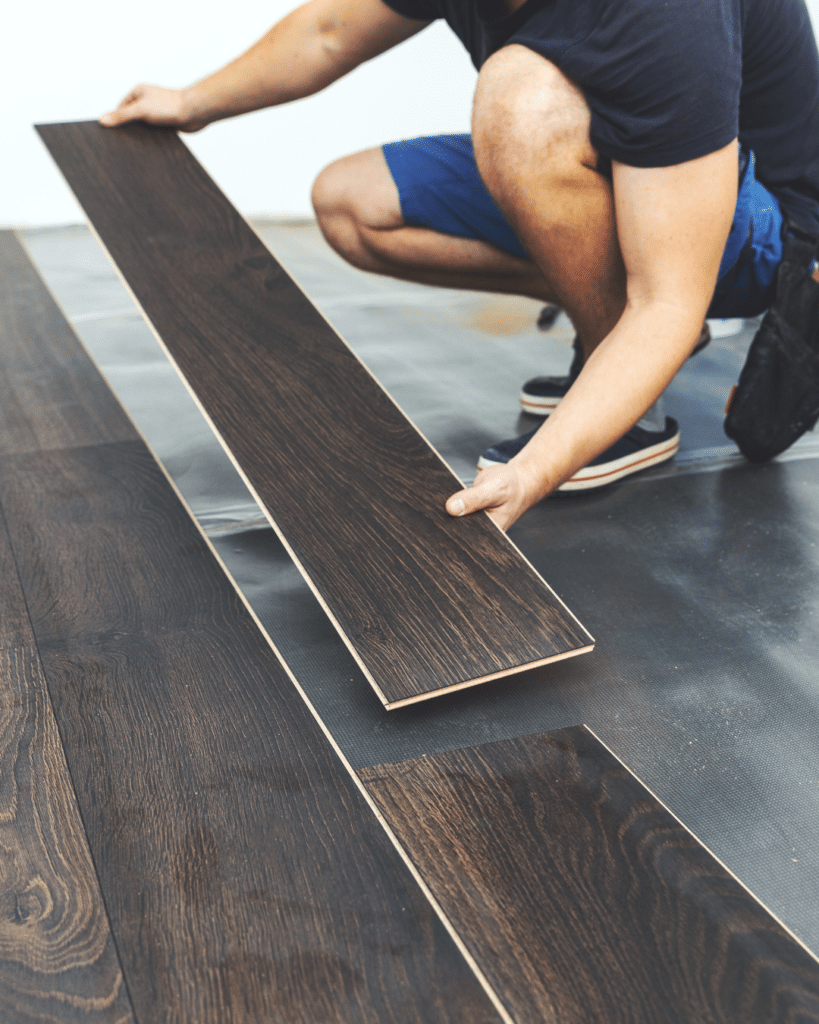
When exploring flooring options for your next remodel, it’s easy to feel overwhelmed by the number of choices available. Among the most popular options on the market today are laminate floors and vinyl floors, two affordable alternatives to real hardwood and ceramic tile. Both are known for their durability and aesthetic appeal—but they’re built differently, perform differently, and serve different needs depending on your space and priorities.
At Discount Decor, we help homeowners throughout northern Colorado navigate these key differences with ease. In this blog, we’ll break down the factors to consider when choosing between laminate and vinyl flooring to match your style, your personal expenses, and the functional needs of your home.
Vinyl vs. Laminate Flooring: Understanding the Basics
Before diving into performance, it’s important to understand how each flooring material is made:
Laminate flooring is composed of a high-density fiberboard (HDF) core with a photographic layer that mimics the look of wood or stone, topped with a clear wear layer. While it’s made from synthetic materials, it often includes organic compounds in the core structure.
Vinyl flooring products, especially luxury vinyl flooring (LVP or luxury vinyl tiles), are fully synthetic and made from polyvinyl chloride (PVC), giving them enhanced water resistance and flexibility.
Both are popular choices for budget-conscious homeowners looking for attractive, durable flooring—but their performance varies by room, traffic levels, and exposure to moisture.
Durability and Water Resistance
If you’re remodeling a high-traffic area or a room that’s prone to moisture, the material you choose matters.
Laminate Flooring
Laminate performs well in dry areas like living rooms, bedrooms, or offices. It’s scratch-resistant and ideal for homes with pets and heavy foot traffic, but not designed to handle standing water. Even small spills can cause swelling or water damage if not cleaned up quickly.
Vinyl Flooring
Vinyl, especially luxury vinyl tiles, is built for moisture. It’s an excellent choice for kitchens, bathrooms, laundry rooms, and basements. Thanks to its water resistance and strong wear layer, vinyl holds up well in both residential and commercial spaces—even in areas that see frequent spills or humidity.
Aesthetic Appeal and Style Options
Both laminate and vinyl offer a wide range of design styles, including realistic reproductions of wood, stone, and tile. Modern printing technology allows for rich textures and highly detailed surfaces that make it hard to tell the difference from natural materials.
Laminate planks tend to offer more convincing wood grain visuals and embossed textures, closely mimicking the feel of real hardwood.
Vinyl flooring products, especially LVP, also come in wood- and tile-look finishes, and they’re easier to cut with tools like a utility knife for quick installation.
If you’re going for authenticity, laminate floors might win on aesthetics in dry spaces. But for versatility and seamless transitions between wet and dry areas, types of vinyl flooring offer more flexibility.
Cost Comparison: More Than Just the Price Tag
When comparing average costs, both vinyl and laminate are among the most affordable types of flooring. However, it’s important to think beyond direct costs like materials and installation, and consider indirect costs such as long-term maintenance and durability.
Laminate floors typically have a lower initial price and can be more cost-effective for large areas where moisture is not a concern.
Luxury vinyl flooring may cost slightly more up front, but its water resistance and durability can offer savings over time—especially in moisture-prone spaces where replacement costs due to water damage could become a factor.
Think of your flooring investment like the cost of attendance for a project—it’s not just about the sticker price but the total value it adds to your home.
Installation and Maintenance
Both laminate and vinyl are designed for easy installation, often featuring click-lock systems or adhesive-backed designs. For DIY-savvy homeowners, installation can be completed with standard tools and some patience.
Laminate planks require a flat, dry subfloor and may need an underlayment for sound and moisture control.
Vinyl flooring products can often be installed directly over existing flooring and offer simpler maintenance routines—just sweep and mop.
Which Flooring Is Right for You?
Feature | Laminate Flooring | Vinyl Flooring |
Water Resistance | Low | High |
Durability | High (dry areas) | High (wet areas) |
Aesthetics | Excellent wood visuals | Versatile styles |
Cost | Lower initial cost | Higher longevity value |
Best For | Living rooms, bedrooms | Kitchens, bathrooms, laundry |
Let Discount Decor Help You Find the Perfect Flooring
Choosing between laminate and vinyl flooring doesn’t have to be difficult. At Discount Decor, we offer a wide range of both flooring types, helping you select the ideal material for your space, style, and budget. Whether you need flooring for a single room or a whole-home remodel, our team is here to guide you through every step—from selection to installation.
Contact us today for a free consultation and discover how the right floor can enhance your home’s value, comfort, and overall design.

